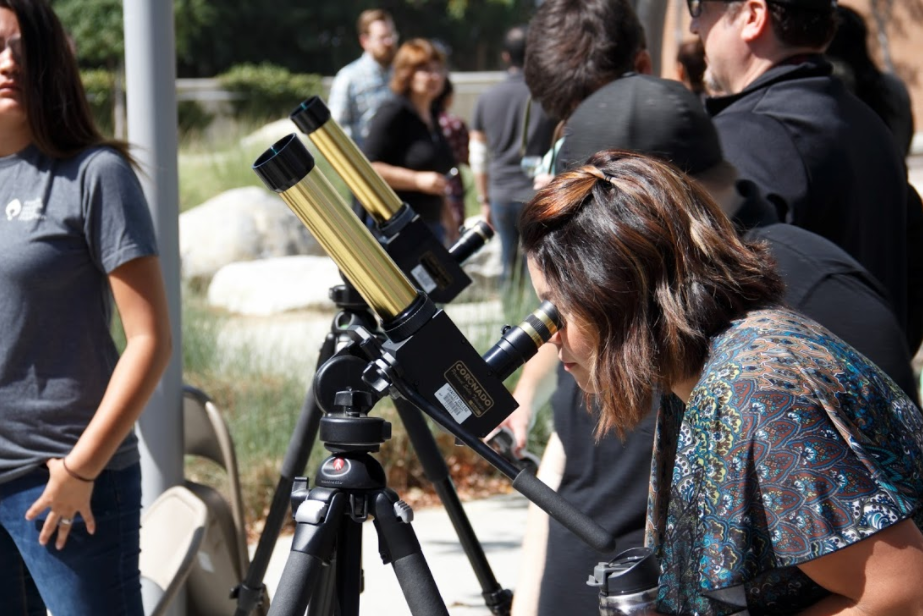The Great American Eclipse: Sightseeing at The Rancho Quad
Above image: Jared Smith, Chaffey alumnus, uses one of many Eclipse Shades shared among sightseers at the Rancho Quad on Aug. 21.
By Jullian Aiden Bravo
@Mr_Reporter_
As The Great American Eclipse was minutes from making its sweep across the U.S., Chaffey students and staff waited in anticipation to witness first-hand the brilliant spectacle on Aug. 21.
Sightseers gathered around tables in the Rancho Quad to observe projections of the partial eclipse produced by Sunspotters while others who were fortunate enough to be given a pair of Eclipse Shades looked up in awe as the Moon partially covered the Sun.





At 9:05 a.m., the Moon slowly began taking its first nibble from the Sun.
By 10:22 a.m., the partial solar eclipse reached its maximum limit. Though it was not a total eclipse as it was was in Oregon and in other states, students and staff looked up with wonder nonetheless.
And for a moment the Earth become cooler and the day slightly darker. Only a perceptive few were aware in the slight change.
"I thought it was psychological but it turns out it's not," Astronomy Professor Douglass McElroy said of the subtle shift in temperature and light.




According to Professor McElroy, solar eclipses occur every year.
"You just got to chase them," McElroy said. "They're always in the most inconvenient places. That's why this is big—because it's in a convenient place."
By 11:40 a.m., both the Moon and Sun neared the conclusion to their celestial show and the audience began to take their leave.
For many sightseers, if not all, it was their first time seeing a partial solar eclipse.
"It's very beautiful. One of natures finest spectacles,"said Nathaniel Zamora, engineering major. "It's too unreal. I don't have the words to describe it but it did bring everyone together. It takes a solar eclipse to do this."

